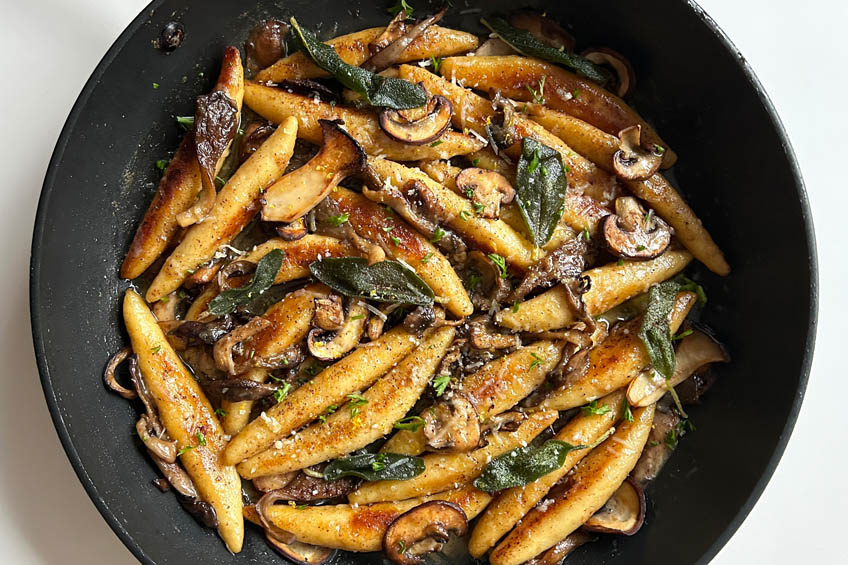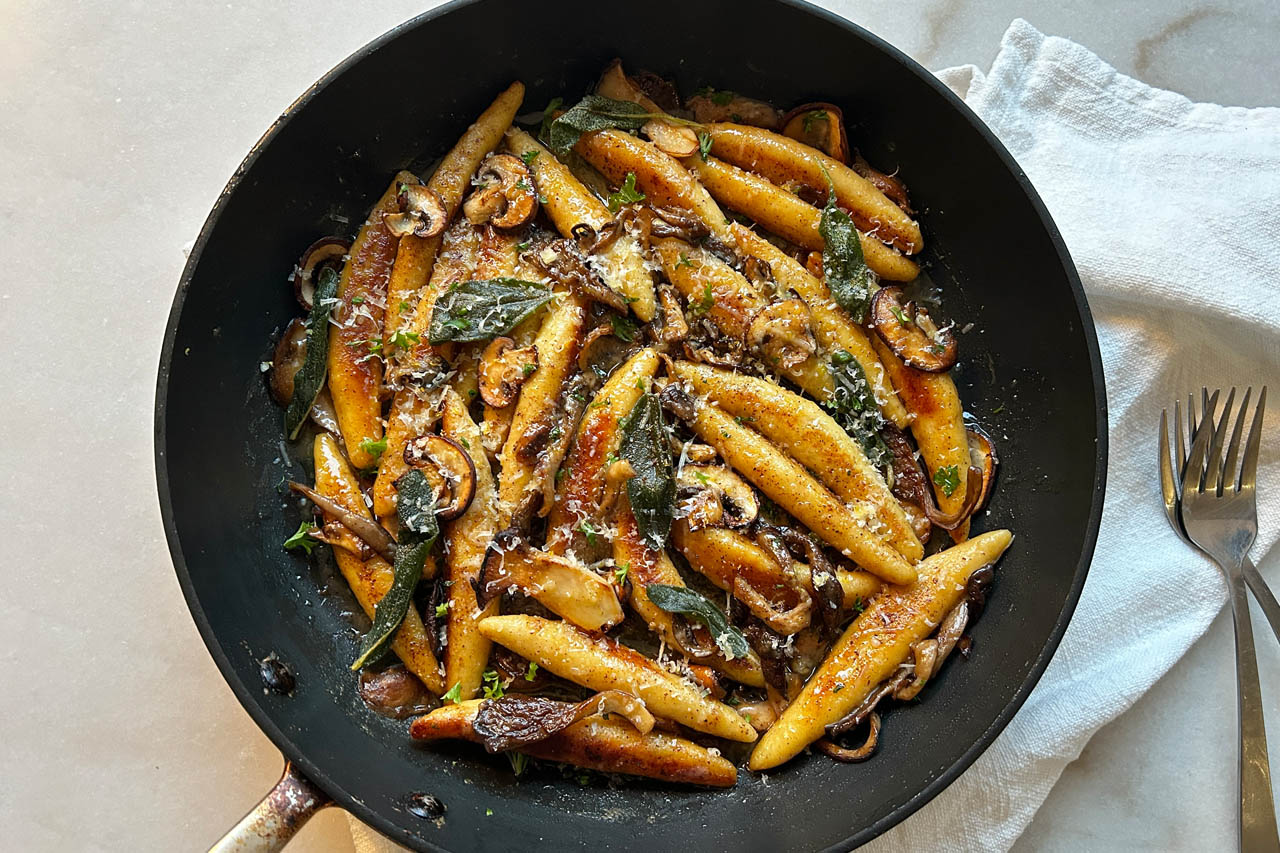
These German potato dumplings are what I crave most during the depths of Canadian winter. It’s when I truly miss the hearty, comforting foods from home in Germany, often centered around savoury flavours like brown butter, cheese and mushrooms. Unlike Spätzle, another kind of German dumpling/noodle hybrid, Schupfnudeln aren’t as well-known but deliver the same satisfying, toothsome bite. Once boiled, they can be crisped up in the frying pan so they’re soft on the inside and crunchy on the outside. Finishing this dish with lemon zest adds brightness and lightens things up just enough to keep you going back for more!
Related: German Flammkuchen Will Be Your New Favourite Comfort Food
ingredients
Noodles
Sauce and toppings
directions

Preheat oven to 400°F. Place potatoes on a lined baking sheet and bake for approximately 1 hour 15 minutes until you can easily pierce through with a sharp knife.
Once cool enough to handle, slice potatoes in half. Use a large spoon to scoop out the flesh and then press through a potato ricer over a clean work surface. Let the potato mixture sit until no longer steaming.
Note: If you do not have a potato ricer, you can use a potato masher in a pinch, but a potato ricer yields the best texture for this recipe.
Sprinkle salt, pepper, nutmeg, ¼ cup semolina flour and ½ cup all-purpose flour over the riced potato. Use your hands to gently incorporate the dry ingredients and then make a well in the center. Crack the egg into it and use a fork to combine. Once the egg is mostly mixed in, you can start using your hands to form the dough. Add a little more of each flour at a time until you are left with a smooth dough that isn’t sticky to the touch. Note: Use only as much flour as you need to handle the dough.
Roll the dough into a ball, divide it and cover one half with plastic wrap. Roll the other half into a flat log about 2 inches wide and 1 inch high. Use a knife or bench scraper to slice the log into ½-inch thick pieces. Do the same with the other half.

Lightly dust your work surface and hands with flour. Working one at a time, cup your hands over a piece of dough and roll back and forth quickly until you have a long, finger-shaped dumpling with tapered ends. I find it easiest to work on forming one end of the dumpling and then rotate it 180° to form the other. Repeat with the remaining pieces of dough. Place finished noodles on a floured, parchment-lined baking sheet and cover with a towel until you are ready to serve.
In a large pan, melt 2 tablespoons butter over medium-high heat. Add mushrooms along with a pinch of salt and cook until golden, working in batches if need be. Remove mushrooms from the heat and set aside.
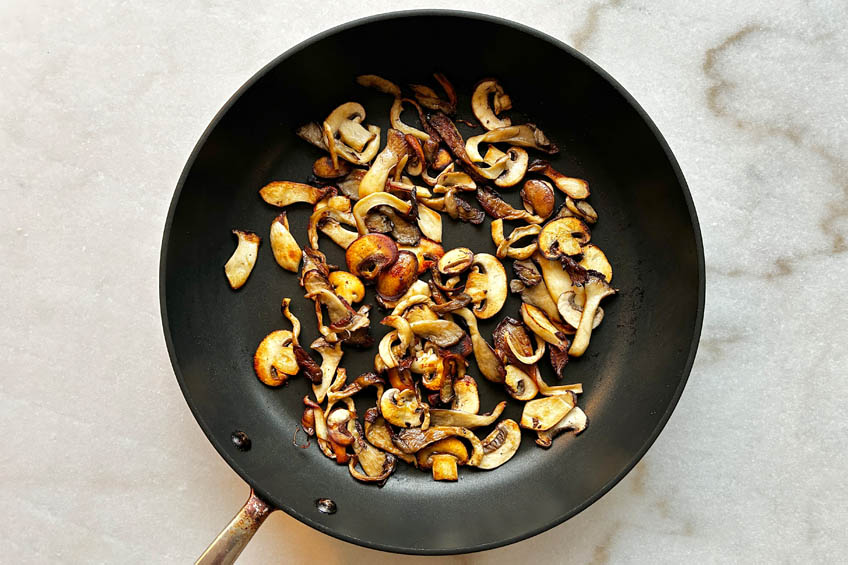
In the same pan, melt the remaining ½ cup of butter over medium heat. Once the butter is sizzling, add sage leaves. Swirl the pan occasionally to make sure nothing is burning or sticking to the bottom. After about 5 minutes, the butter should smell nutty and be a light brown colour. Turn off the heat. Carefully remove the sage leaves, draining any excess butter, and place them on a paper towel-lined plate. Set aside.
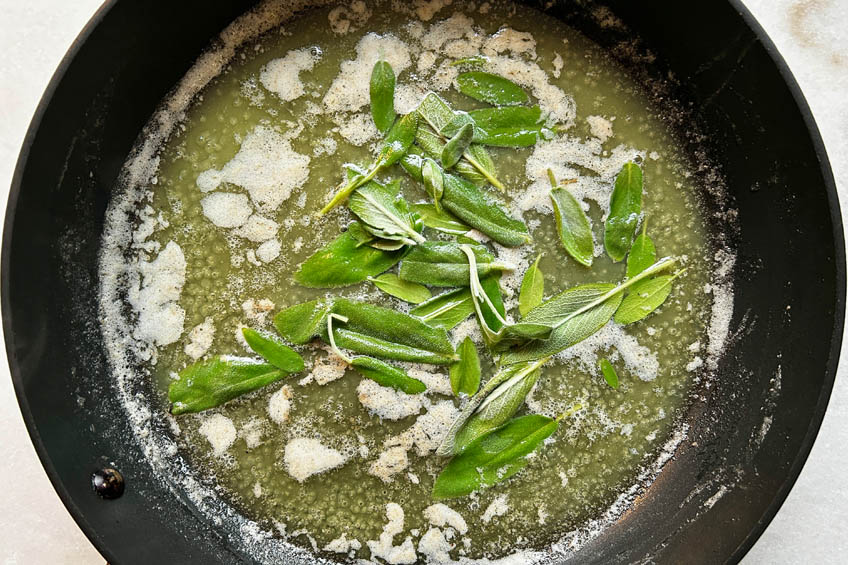
Bring a salted pot of water to a boil and use a slotted spoon to gently drop in the prepared noodles. Cook the noodles until they float (about 3 minutes). Remove noodles and toss them in a bowl with a splash of brown butter to prevent them from sticking. Save 1 cup of pasta water.
Once your noodles are cooked and you are ready to serve, heat the large pan over medium heat again to warm the butter. Once hot, add the noodles and fry, stirring occasionally, until crispy and golden. Increase the heat slightly, if need be.

Add reserved mushrooms, gruyere, parmesan and a splash of pasta water, tossing to create a glossy sauce. Finish with lemon zest, fried sage leaves, salt and pepper.
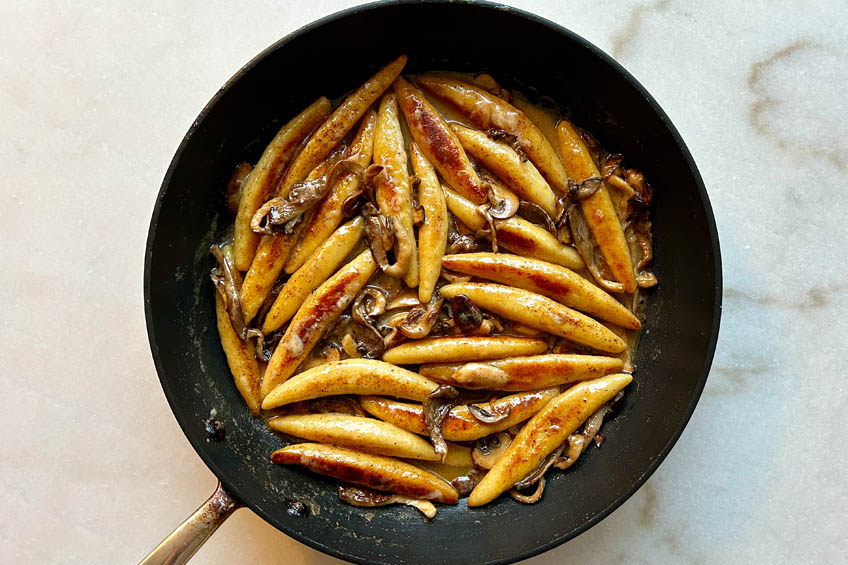
Serve immediately.
